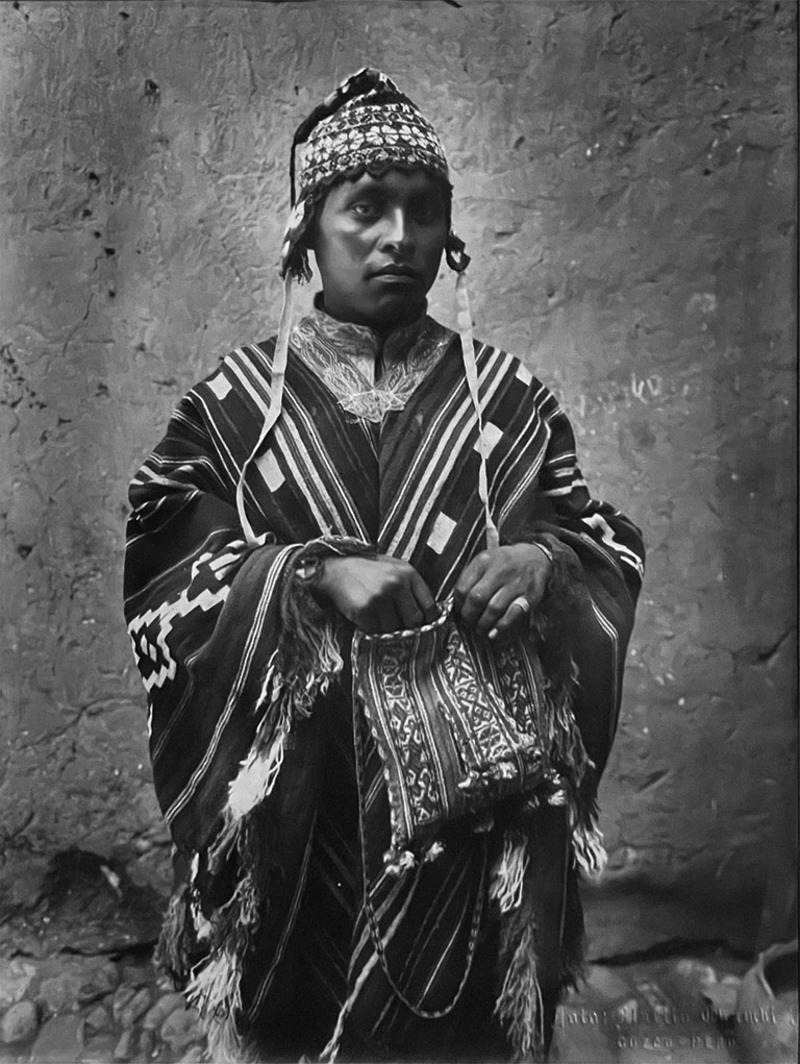Martín Chambi and Edward Sheriff Curtis
Photography Gallery
Martín Chambi (1891–1973) and Edward Sheriff Curtis (1868–1952) carried out influential photographic practices at different latitudes of the Americas in the early twentieth century. Chambi operated a studio in Cusco, Peru, from 1923 to 1950, specializing in Andean landscapes and portraits of people from a variety of social classes and ethnicities. Curtis traveled the United States from 1906 to 1930 with ethnographic ambitions to document Native American nations. The juxtaposition of their work here creates a context for the investigation of and dialogue about the photography of Indigenous communities in relationship to processes of colonialism, modernization, and urbanization in the Americas.
The photographs by Chambi include images of Indigenous people around Cusco in moments of leisure as well as posed portraits. Born in a rural province to Quechua parents, Chambi spoke both Quechua and Spanish, allowing him to connect with many of his photographic subjects. He embraced Andean culture and identity as a subject, but his photographs notably focus on the present, exploring Indigeneity in relationship to technology, global cultures, and social change, rather than a romanticized past.
The photographs by Curtis, printed in the penultimate volume of his influential book The North American Indian, depict people from the Southern Cheyenne (Tsistsistas) tribe in Oklahoma in the late 1920s. Today the Southern Cheyenne share a government with the Arapaho in western Oklahoma. Curtis’s project illustrates the conflicted nature of photography—part science, part art—in a period when anthropology was also becoming a formalized discipline. Although the ethnographic texts of Curtis’s book suggest documentary aspirations, his stylized photographs are mediated through a colonialist framework and nostalgia for preindustrial life. He framed Indigenous communities as cultures in the process of disappearing, while erasing the conditions of their displacement and genocide.
Selected works

Edward Sheriff Curtis
Cheyenne Footwear
1927
Edward Sheriff Curtis
Wife of Howling Wolf—Cheyenne
1927
Edward Sheriff Curtis
Old Crow—Cheyenne
1927
Edward Sheriff Curtis
Sun Dance Lodge—Cheyenne
1927
Edward Sheriff Curtis
Hefata"yu Society, Cheyenne Sun Dance
1927
Edward Sheriff Curtis
Buffalo Dancers, Animal Dance—Cheyenne
1927
Edward Sheriff Curtis
Drying Meat—Cheyenne
1927
Edward Sheriff Curtis
Brush Lodge—Cheyenne
1927
Edward Sheriff Curtis
Brush Huts, Animal Dance Encampment—Cheyenne
1927
Martín Chambi
Fiesta en la Hacienda Angostura (Celebration at the Hacienda Angostura)
c. 1929, printed later
Martín Chambi
Jugando al sapo en chicheria, Cusco (Playing sapo in a chicheria)
1931, printed later
Martín Chambi
Juan de la Cruz Sihuana, Cusco (formerly known as "Gigante de Paruro" [Giant of Paruro])
c. 1925–29, printed later
Martín Chambi
Campesinos en el juzgado, Cusco (Campesinos in court, Cusco)
1929, printed later
Martín Chambi
Untitled
c. 1930s, printed later
Martín Chambi
Campesino con chuspa (Peasant with coca bag)
1934, printed later
Martín Chambi
Untitled
c. 1930, printed later